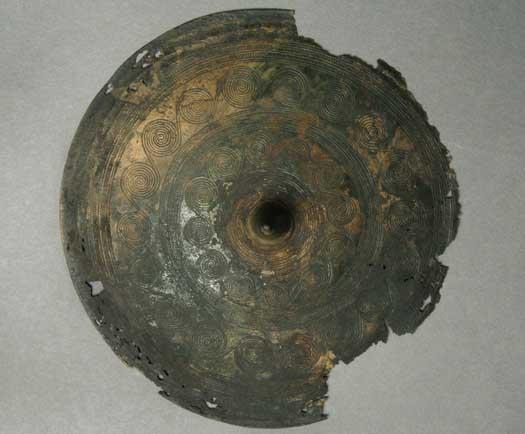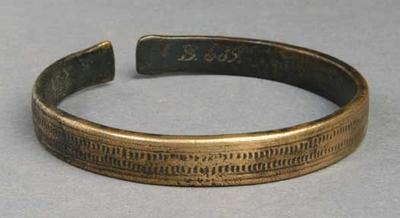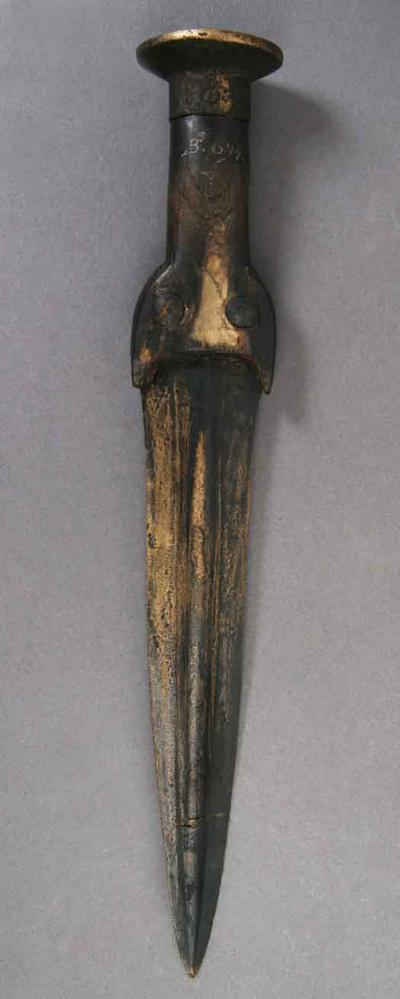The bronze objects from the barrow
No legends of trolls, warriors or princes could scare Søren Ovesen, the owner of the farm Højballegården. In 1871 he handed in a number of bronze items to the Historical-Antiquarian Society in Aarhus, gleefully telling them that he had found them while digging in Borum Eshøj. He had in fact been doing this for several years to use the soil as fertilizer for his fields. When he found the items they lay in a wooden coffin, which had also contained human bones wrapped in woollen material. The clothes had been torn up and he could not understand how these rags could be significant. Antiquarians from Århus rushed to the site and saved what they could. The barrow had by then been reduced to a height of about 8-9 metres. They were told that the objects found came from a grave where the body lay in an oak coffin. The farmer had removed the lid and rummaged in the contents with a dung fork and a poker. In 1875 an excavation was undertaken by the Museum of Nordic Antiquities, the present- day National Museum. During this excavation a further two oak-coffin graves were found containing well-preserved bodies and various kinds of grave goods.



